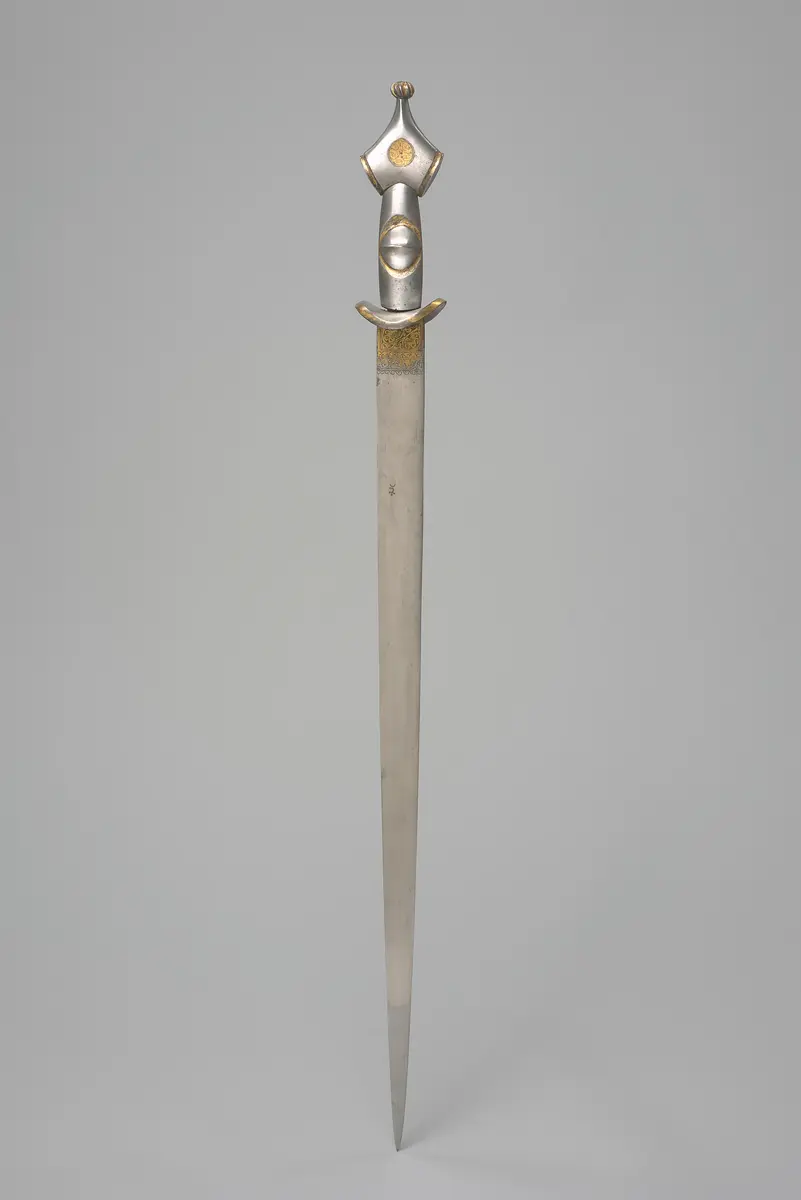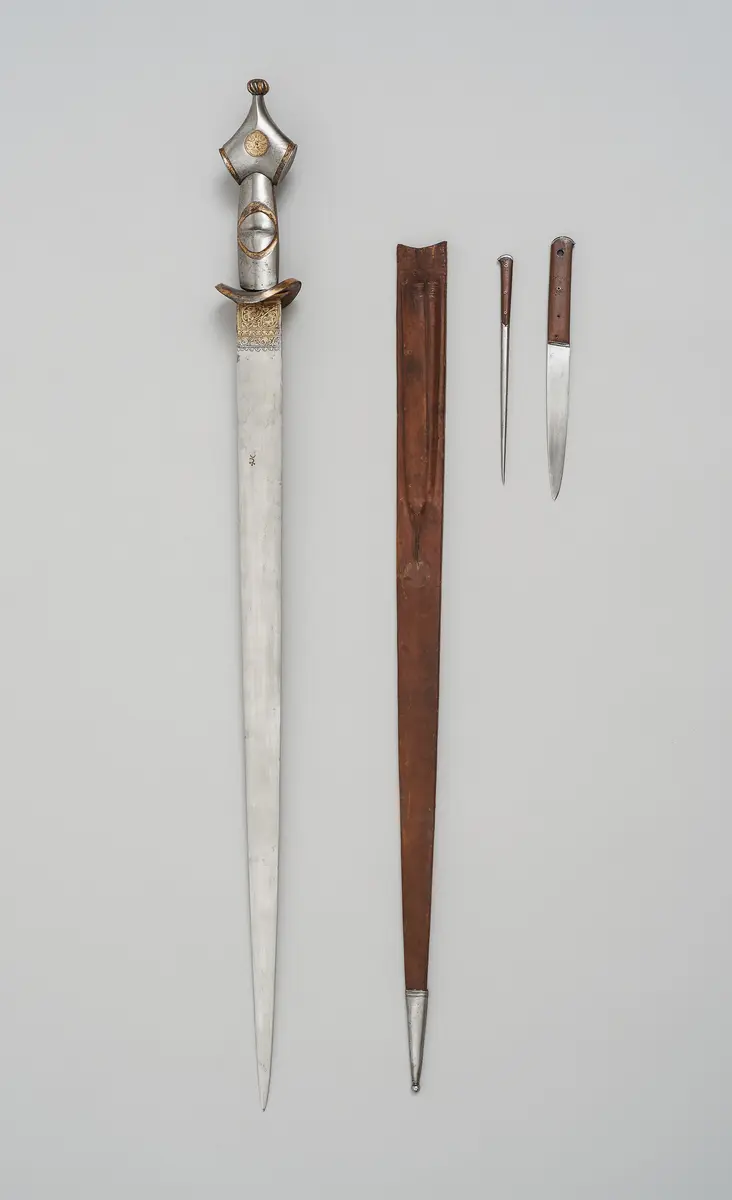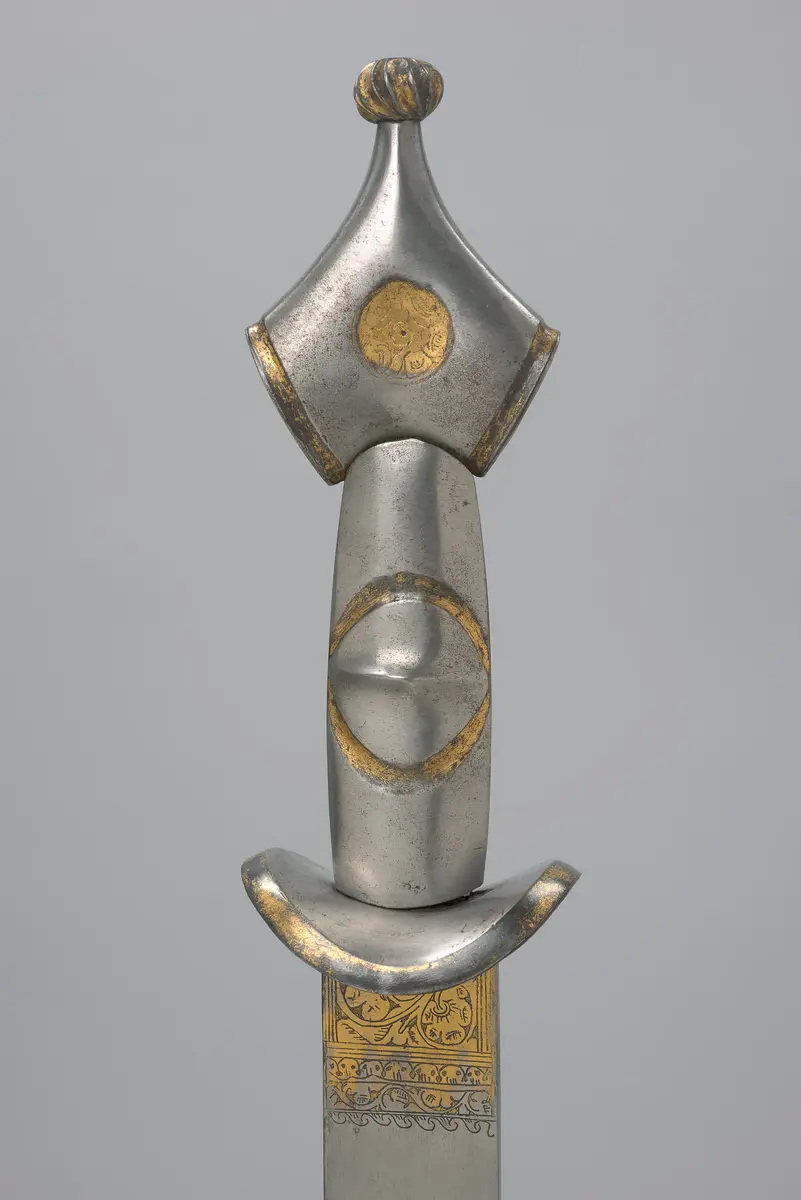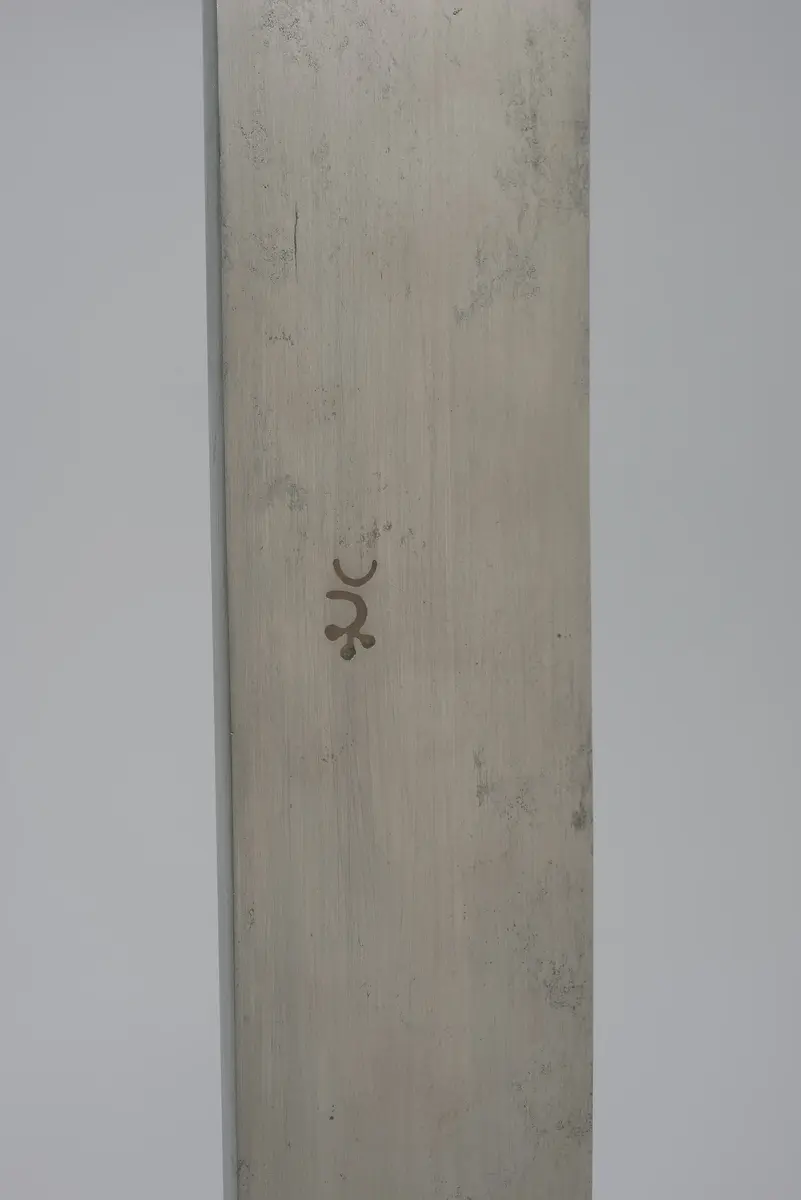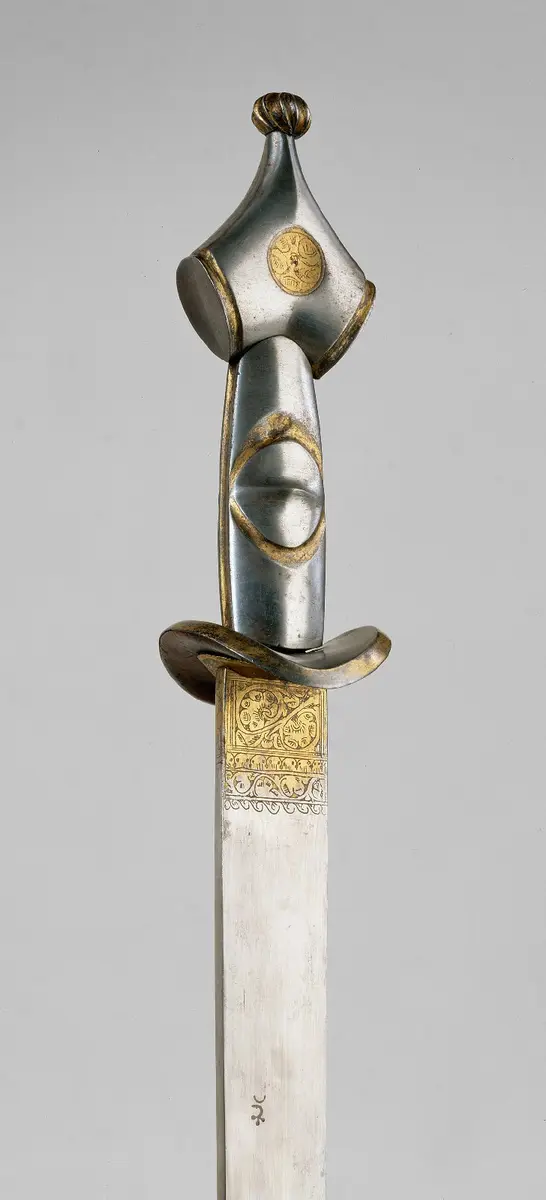Besitzer/in:
König Philipp I. Sohn Maximilans I. von Habsburg (1478 - 1506) DNB
Zeit:
zwischen 1496 und 1506
Objektbezeichnung:
Langer Dolch
Kultur:
Spanisch
Material/Technik:
Klinge: Eisen, geschmiedet, teils geätzt. Ätzdekor: teils feuervergoldet, teils geschwärzt. Klingenschmiedstempel: Kupfertauschierung. Stichblatt: Eisenblech, teils feuervergoldet. Leder. Griff: Eisenblech, teils feuervergoldet, teils geätzt. Ätzdekor: teils feuervergoldet, teils geschwärzt. Holz. Knauf: Eisenblech, teils geätzt, teils feuervergoldet. Eisen, geschmiedet, feuervergoldet. Scheide: Holz, Leder. Ortband: Eisen, geschmiedet. Messer: Klinge: Eisen, geschmiedet. Griff: Holz. Pfriem: Klinge: Eisen, geschmiedet. Griff: Holz.
Maße:
Schwert: L 88,5 cm x B 6,8 cm x T 6 cm, Gewicht: 0,85 kg
Scheide: L 72,8 cm x B 4,4 cm x T 2,5 cm, Gewicht: 0,20 kg
Messer: L 22,6 cm x B 1,9 cm x T 0,7 cm
Pfriem: L 19,8 cm x B 1,9 cm x T 0,6 cm
Stempel / Zeichen:
Klinge: einseitig ein Klingenschmiedstempel
Bildrecht:
Kunsthistorisches Museum Wien, Hofjagd- und Rüstkammer
Inv. Nr.:
Hofjagd- und Rüstkammer, A 428
